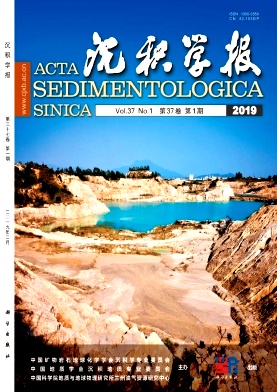Geochemistry Record and Their Environmental Implications during the Past 14 ka in Kuhai Lake, NE Tibetan Plateau
doi: 10.14027/j.issn.1000-0550.2018.122
- Received Date: 2018-02-13
- Rev Recd Date: 2018-03-29
- Publish Date: 2019-02-10
-
Key words:
- X-Ray Fluorescence (XRF) /
- principal component analysis (PCA) /
- element ratios /
- Tibetan Plateau /
- lake level
Abstract: Lake basins on the northeastern Tibetan Plateau are regarded as important archives for the reconstruction of environmental and climate changes during the Upper Quaternary. Lake deposits serve as ideal indicators of various transport and depositional processes in changing hydro-climatic settings. Understanding such dynamic processes is of crucial interest when deciphering the process-response behavior of lakes from their sedimentary characteristics over time. The closed saline Kuhai Lake is an ideal location for unraveling sediment dynamics and related lake level changes during the last 14 ka B.P., as revealed by sediment core KH17 (around 7 m long) retrieved from the deepest part of the lake basin. Sediment grain size, loss on ignition (LOI) and X-ray fluorescence (XRF) were used to determine such depositional and transportation processes. Principal component analysis (PCA) shows that PC1, characterized by high positive loadings of K, Ti, Mn, Fe and Rb, is related to the detrital material transported by inflowing rivers. Ca and Sr in PC2 have high correlation coefficients indicating the varying intensity of local evaporation. Zr (high loadings on PC3) and Rb are related to coarse and fine sediment components respectively, which are mainly transported by wind and suspended load of inflows. The Zr/Rb ratio was used to judge the intensity of geochemical weathering. Fe/Mn and Sr/Ca indicate redox conditions and salinity, which are related to lake level changes. Based on the proxies, the environmental history over the past 14 ka was reconstructed as follows. During 13.6~13 ka B.P., the Kuhai Lake Basin was covered by a shallow water body, and strongly influenced by inflow variations. The Younger Dryas interval between 13 and 11.5 ka B.P. experienced cold, dry conditions and increased aeolian transport, which influenced the depositional environment. A 500-year warm and wet intermediate phase may have existed, according to the chronology. Temperatures increased to a large extent since the Early Holocene, which led to increased evaporation and the formation of carbonates following a slight lake level rise. The water depth peaked during the Middle Holocene, reaching the highest level experienced by the lake. After 5.3 ka BP, Kuhai Lake experienced a drier period, with high salinity and varying carbonate precipitation. Water supply has fluctuated greatly since the Late Holocene (2.7 ka B.P.).
| Citation: | HU YanBo, Bernd Wünnemann, ZHANG YongZhan, YAN DaDa. Geochemistry Record and Their Environmental Implications during the Past 14 ka in Kuhai Lake, NE Tibetan Plateau[J]. Acta Sedimentologica Sinica, 2019, 37(1): 104-114. doi: 10.14027/j.issn.1000-0550.2018.122 |






 DownLoad:
DownLoad: